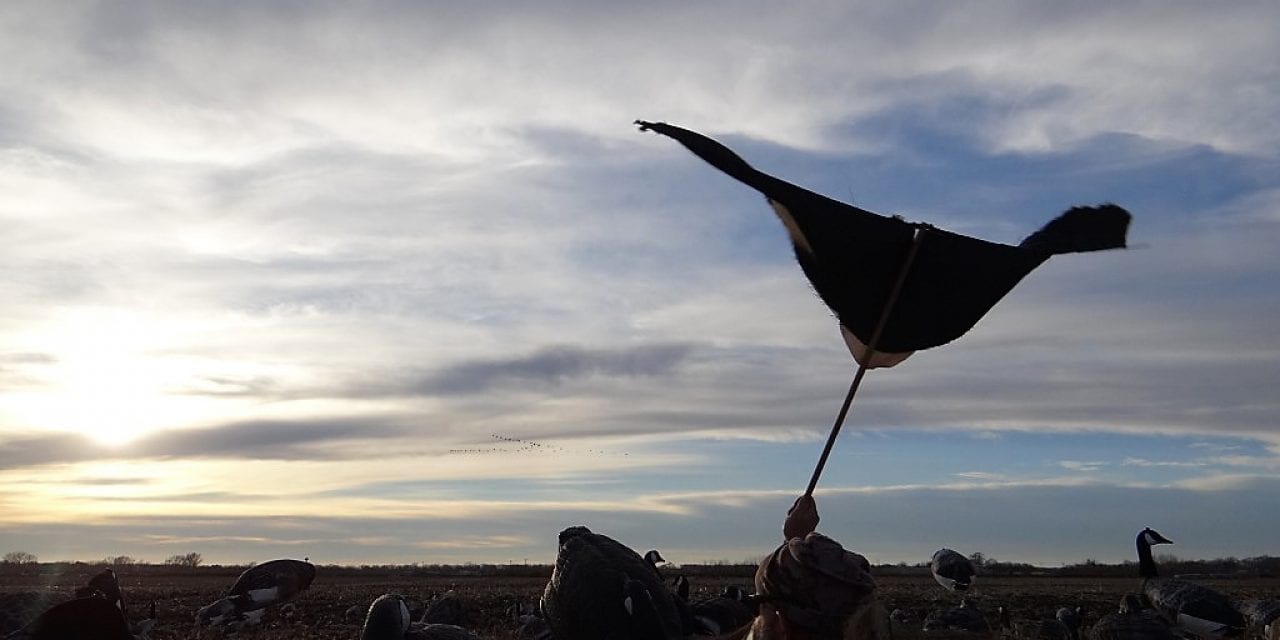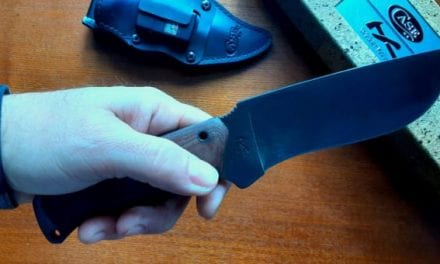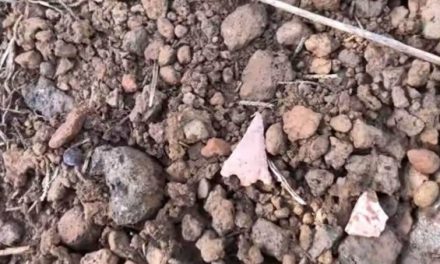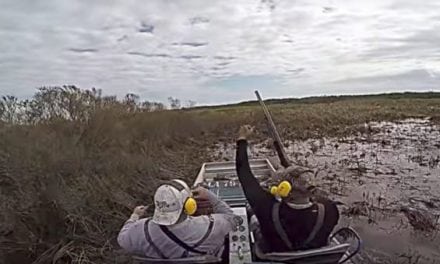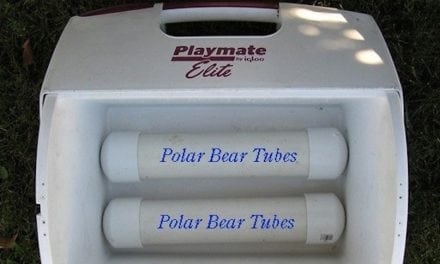Anyone who waterfowl hunts knows that movement in a decoy spread is crucial.
Yeah, there are a plethora of motion decoys on the market to buy — battery-powered ones, mechanical flappers, windsocks, bags, kites, moving shells, etc. However, there is another kind of motion decoy used in waterfowl hunting by the hunter him or herself — the flag.
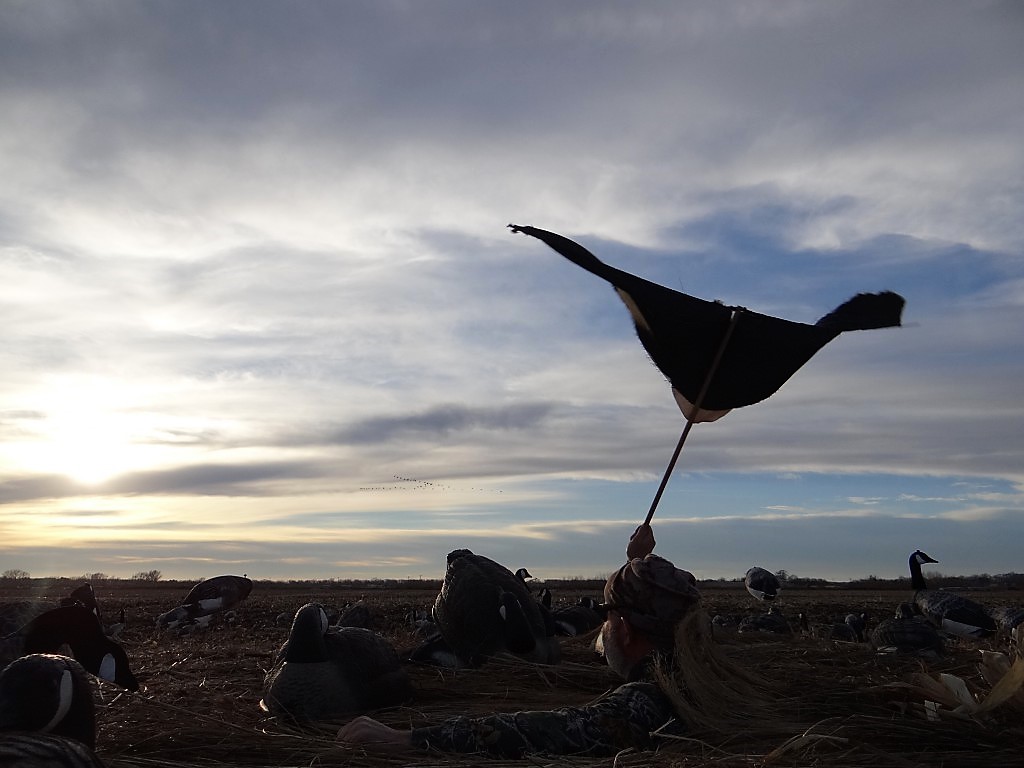
Longtime waterfowl hunter, Pat Wurth of Valley, NE, “flags” to try to entice a flock of Canada geese off in the distance to come within shooting range in his southeast Nebraska waterfowl spread . Photo by Greg Wagner/Nebraska Game and Parks Commission.Who would have thought that attaching a set of fabric wings with relatively stiff wire on a wooden dowel in a T-shaped form and then waving it somewhat erratically up and down and at angles would attract waterfowl, particularly Canada geese? Not me, no way.
You know what? I would have been wrong!
Flagging, as it is called, or a form of it, was used in ancient times to harvest geese with throw nets but re-invented for modern waterfowl hunting in the 1980’s. Avid waterfowl hunter, Randy “The Flagman” Bartz from Oronoco, Minnesota, is credited with making the initial sets of these hand operated devices that simulate waterfowl wings flapping. Bartz’s emphasis was on Canada geese. The method used by the hunter with his or her flags gives the appearance of live ducks or geese in the air either landing or stretching their wings on the ground over a decoy spread.
So, why “flag?”
Coupled with proper calling, flagging is one of the most inexpensive, simple, but highly effective ways to attract the attention of Canada geese at great distances and lure them into a spread, especially a field spread. The use of flags by hunters even compliment other motion-activated decoys in a spread. If you think about it, how many times have you seen geese frequently flapping their wings in a flock on the ground or outstretched and fluttering right before landing? And, consider how many times have you seen Canada geese fly toward the decoy spread when one of your hunting partners is out of the blind rearranging decoys. Quite a bit, right?
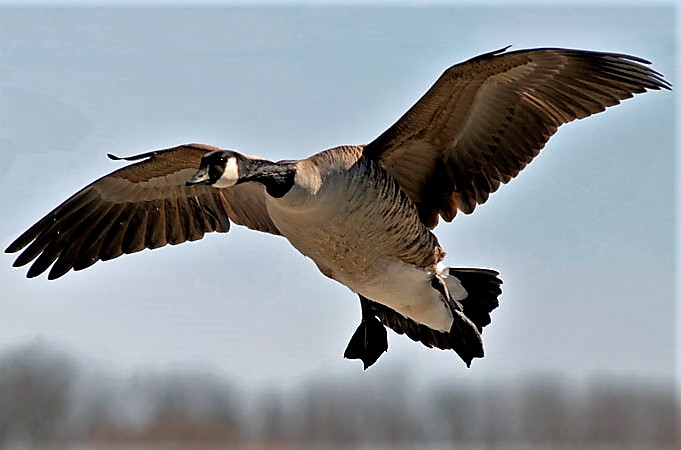
After being flagged, a solo Canada goose prepares to land into a Canada goose hunting spread in southeast Nebraska. Photo by Greg Wagner/Nebraska Game and Parks Commission.The cool thing with flagging is that every hunter in the blind can have and use a flag (or two) to add realism to a decoy spread. Everyone is involved and part of the team effort to lure the targeted waterfowl species close enough for shots.
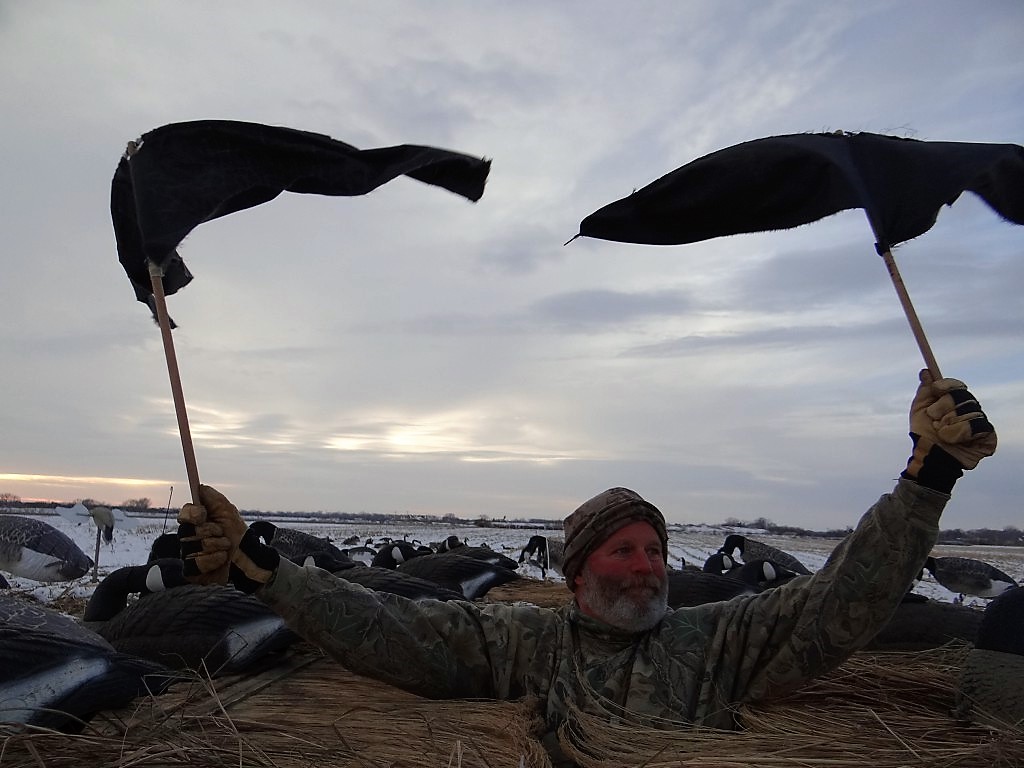
Pat Wurth of Valley, NE works two flags in an attempt to attract a large flock of Canada geese to his decoy spread in southeast Nebraska. Photo by Greg Wagner/Nebraska Game and Parks Commission.Okay, how does a goose hunter in a blind go about flagging?
Begin the process with the T-flag held high and flap downward with plenty of wrist action. This could be compared to jigging while fishing.
Flag starting, stopping, and starting again when geese are seen off in the distance. This tactic, it seems, offers the perception that a flock is on the ground and can even imitate one landing. Flagging at Canada geese off in the distance is very effective. Waterfowl have tremendous eyesight and the line from veteran waterfowl hunters is: If you can see them, they have already seen you! Another thing I’ve learned about flagging: Flag aggressively and more so at Canada geese that are further out and less and subtler as they approach the spread.
Some hunters put their flags on long, flexible poles to allow geese or ducks to see the movement at even longer distances.
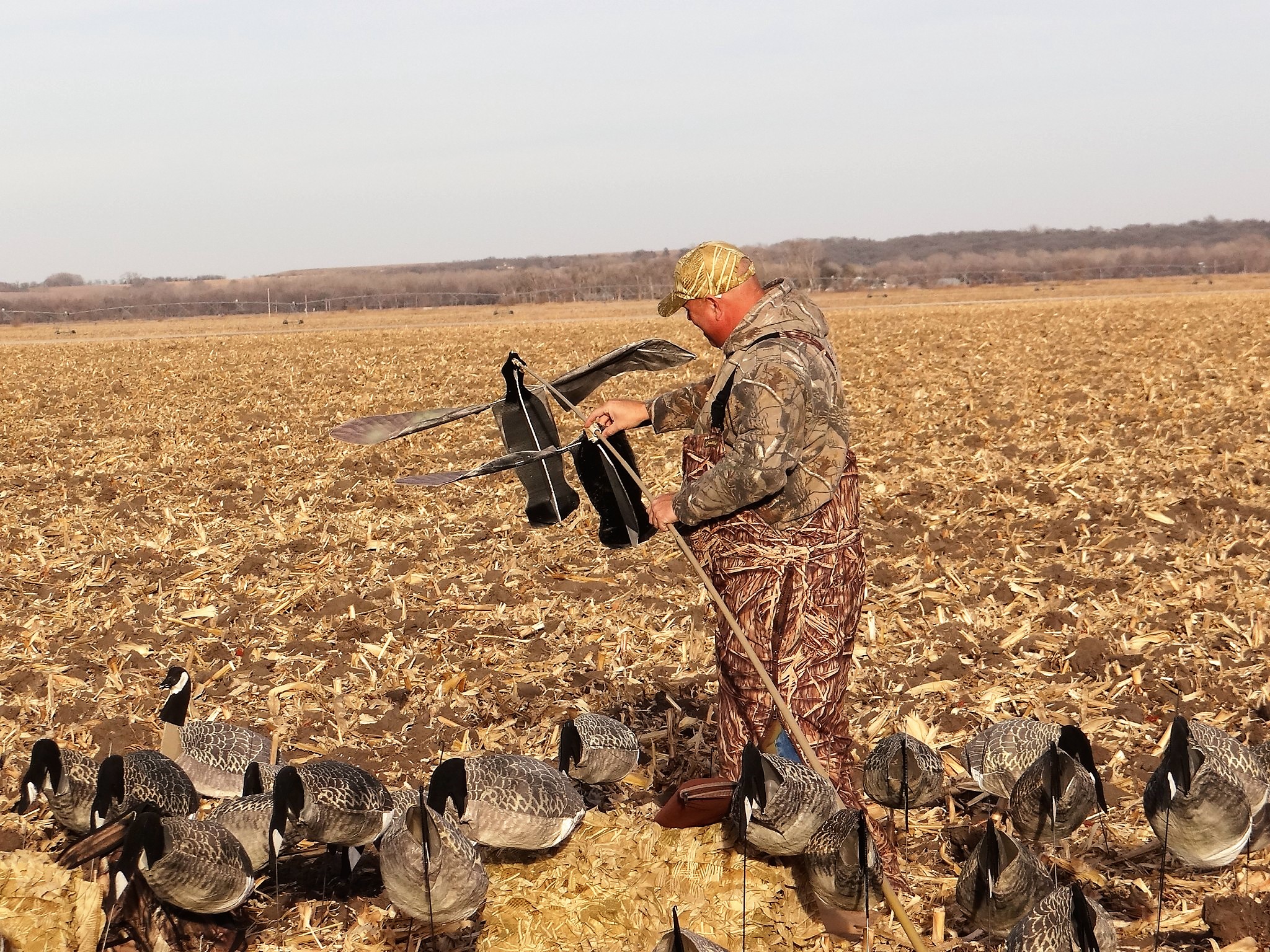
Experienced waterfowl hunter and decoy manufacturer, Jim Druliner of Omaha, NE, arranges multiple flags on a long, somewhat stiff but flexible wooden pole. Photo by Greg Wagner/Nebraska Game and Parks Commission.Then, they’ll use smaller, shorter flags as the birds draw nearer. The hunter can even hide behind a flag on the close approach of geese without having to duck down into the blind. I have also found that flagging sometimes works to bring a flock of geese that has flown passed the blind, back around to check out the spread. The hunter stops flagging just prior to picking up your shotgun to shoot.
Flagging works well with layout blinds, too.
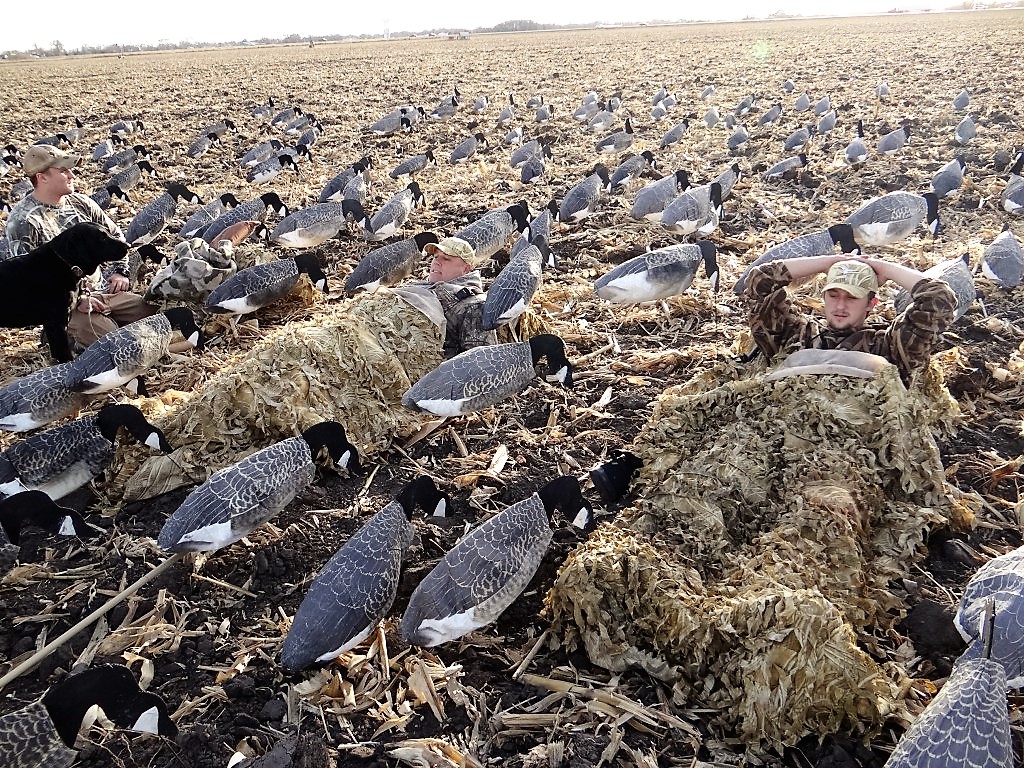
A field spread for Canada geese using layout blinds, windsock decoys and long flagging poles. Notice the wooden pole positioned next to waterfowl hunter, Jim Druliner (lower left). Photo by Greg Wagner/Nebraska Game and Parks Commission.I have learned a lot about flagging for Canada geese during the past several dark goose hunting seasons here in Nebraska and had success with it!
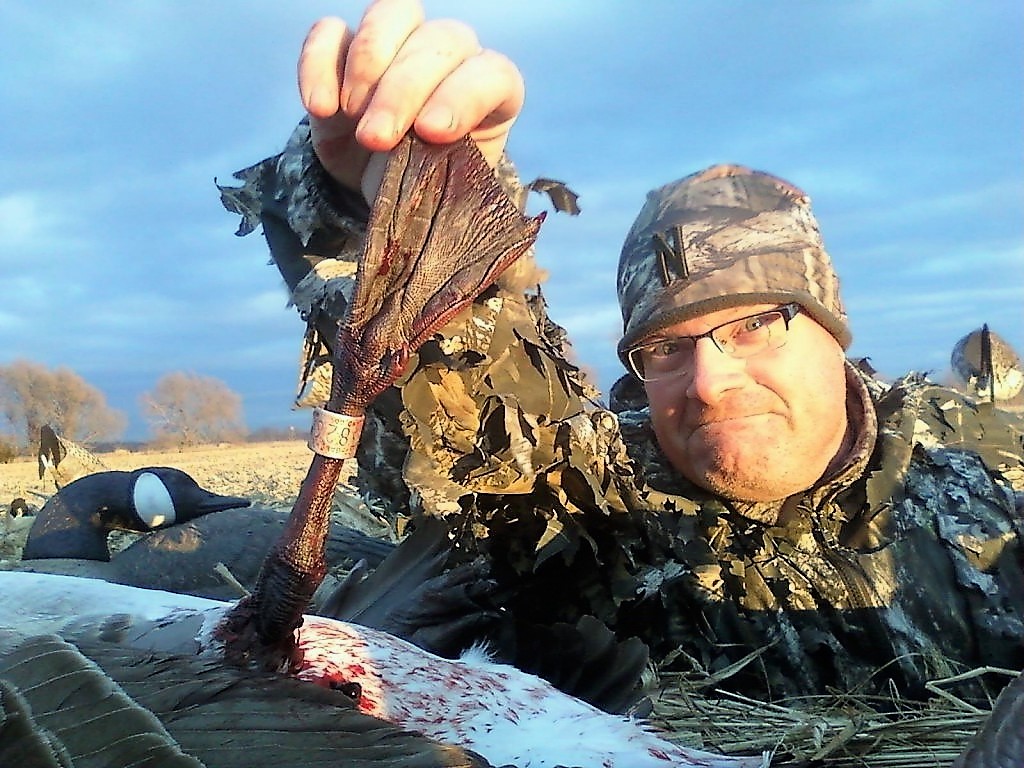
Your blogger displays a banded Canada goose that was harvested with the flagging technique in southeast Nebraska. Photo by Jim Druliner of Omaha, NE.
To me, flagging adds another fun, action-packed, calorie-burning, low-cost dimension to any dark goose hunt.
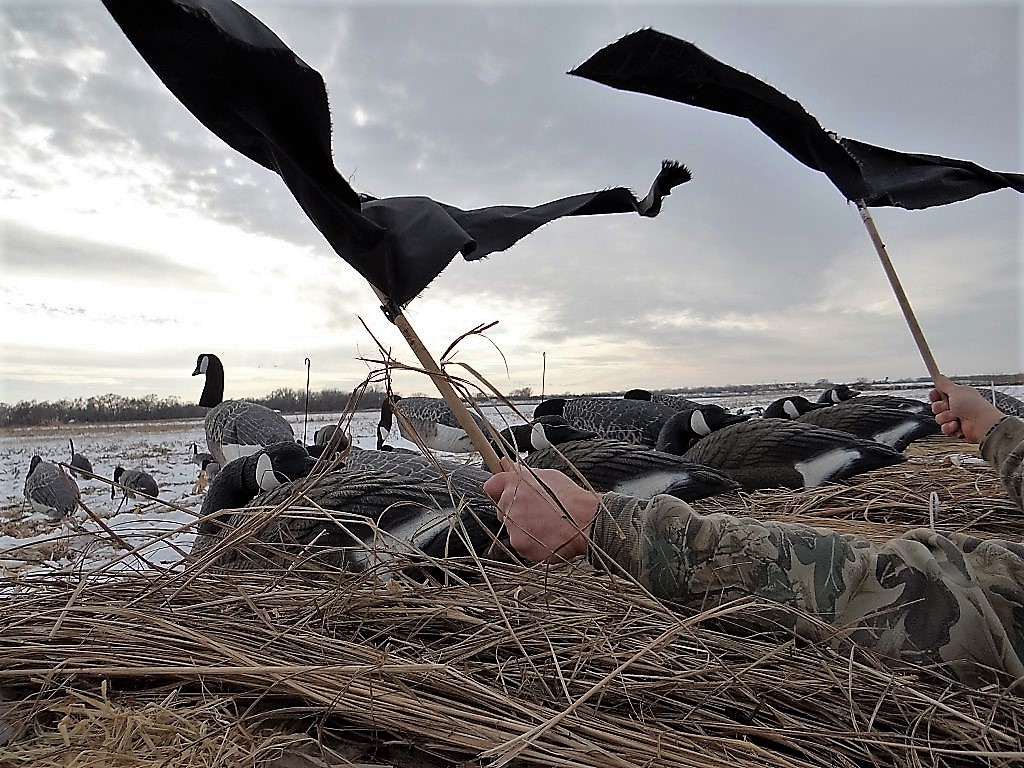
Flagging adds an action-packed element and a team approach to Canada goose hunting. Photo by Greg Wagner/Nebraska Game and Parks Commission.I encourage you to try it! You’ll be glad you did!
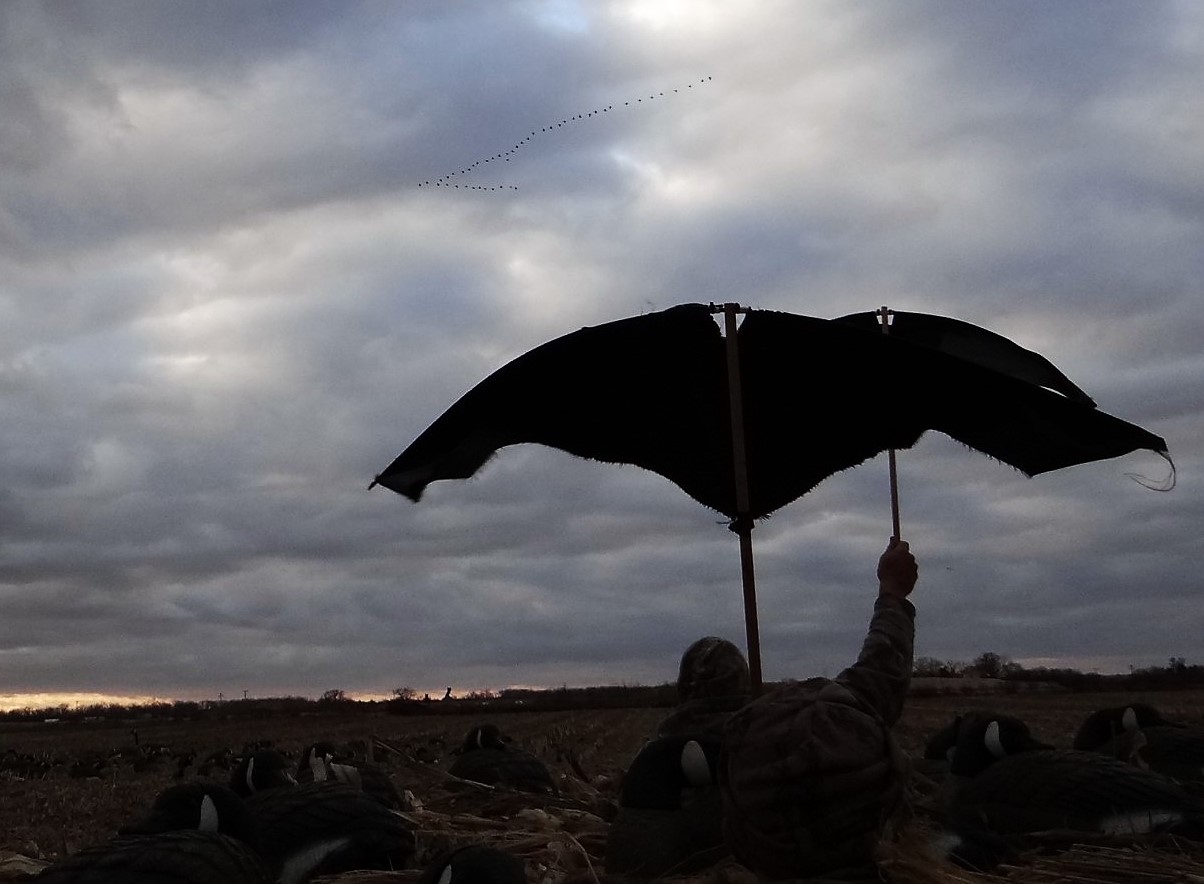
Flagging for Canada geese on the horizon in southeast Nebraska. Photo by Greg Wagner/Nebraska Game and Parks Commission.
The post Flagging For Canadas appeared first on NEBRASKALand Magazine.

